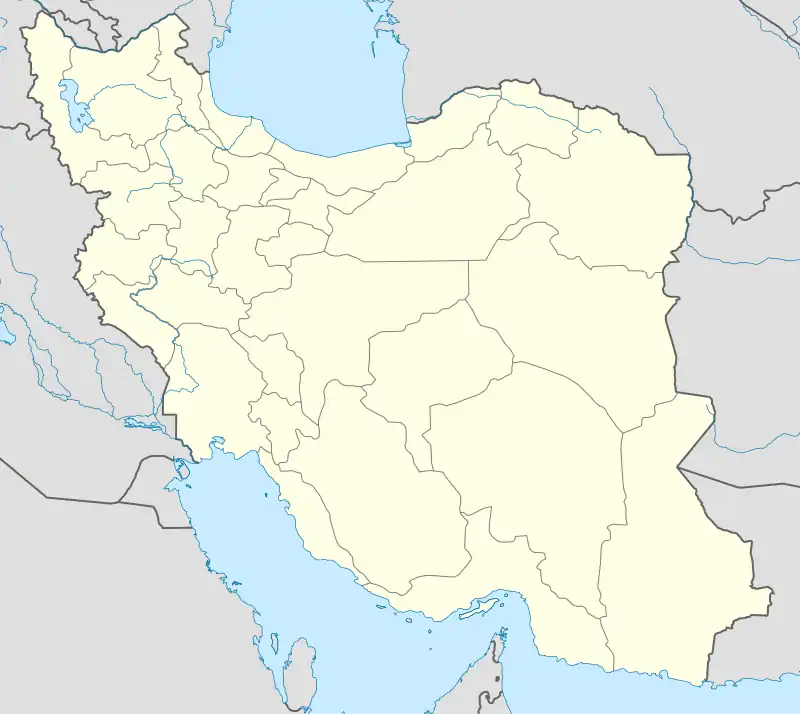Chah-e Salar
Persian: چاه سالار | |
|---|---|
Village | |
 Chah-e Salar | |
| Coordinates: 35°53′47″N 58°21′05″E / 35.89639°N 58.35139°E[1] | |
| Country | |
| Province | Razavi Khorasan |
| County | Miyan Jolgeh |
| District | Central |
| Rural District | Ghazali |
| Population (2016)[2] | |
| • Total | 1,509 |
| Time zone | UTC+3:30 (IRST) |
Chah-e Salar (Persian: چاه سالار) is a village in Ghazali Rural District of the Central District of Miyan Jolgeh County, Razavi Khorasan province, Iran.
At the 2006 National Census, its population was 1,239 in 287 households, when it was in the former Miyan Jolgeh District of Nishapur County.[3] The following census in 2011 counted 1,385 people in 363 households.[4] The latest census in 2016 showed a population of 1,509 people in 429 households; it was the largest village in its rural district.[2]
In 2023, Miyan Jolgeh District was separated from Nishapur County in the establishment of Miyan Jolgeh County, which was divided into two districts of two rural districts each, with the city of Eshqabad as its capital.[5]
References
- ↑ OpenStreetMap contributors (4 May 2023). "Chah-e Salar, Miyan Jolgeh County" (Map). OpenStreetMap. Retrieved 4 May 2023.
- 1 2 "Census of the Islamic Republic of Iran, 1395 (2016)". AMAR (in Persian). The Statistical Center of Iran. p. 09. Archived from the original (Excel) on 2 April 2022. Retrieved 19 December 2022.
- ↑ "Census of the Islamic Republic of Iran, 1385 (2006)". AMAR (in Persian). The Statistical Center of Iran. p. 09. Archived from the original (Excel) on 20 September 2011. Retrieved 25 September 2022.
- ↑ "Census of the Islamic Republic of Iran, 1390 (2011)". Syracuse University (in Persian). The Statistical Center of Iran. p. 09. Archived from the original (Excel) on 20 January 2023. Retrieved 19 December 2022.
- ↑ Mokhbar, Mohammad (11 December 1401). "Changing the center of Eshqabad Rural District, Miyan Jolgeh District of Nishapur County, Razavi Khorasan province to Raisi village and the center of Belharat Rural District to Rigi village". Qavanin. Ministry of Interior, Board of Ministers. Archived from the original on 2 July 2023. Retrieved 17 November 2023.
This article is issued from Wikipedia. The text is licensed under Creative Commons - Attribution - Sharealike. Additional terms may apply for the media files.
